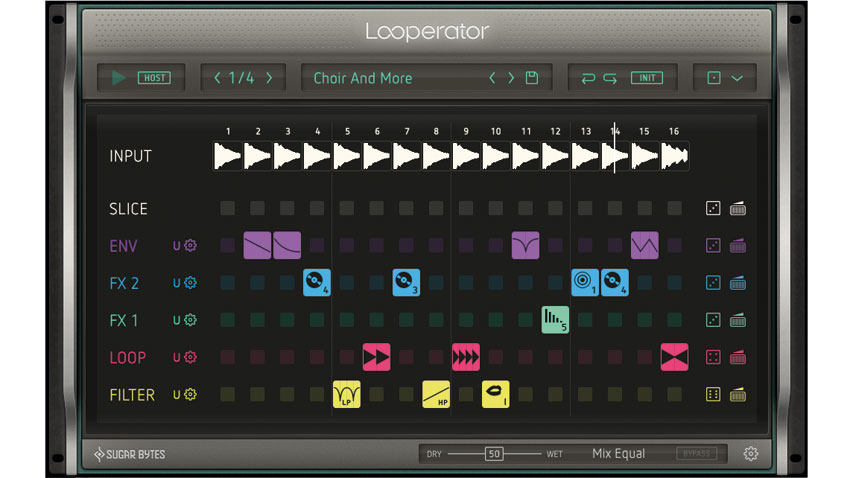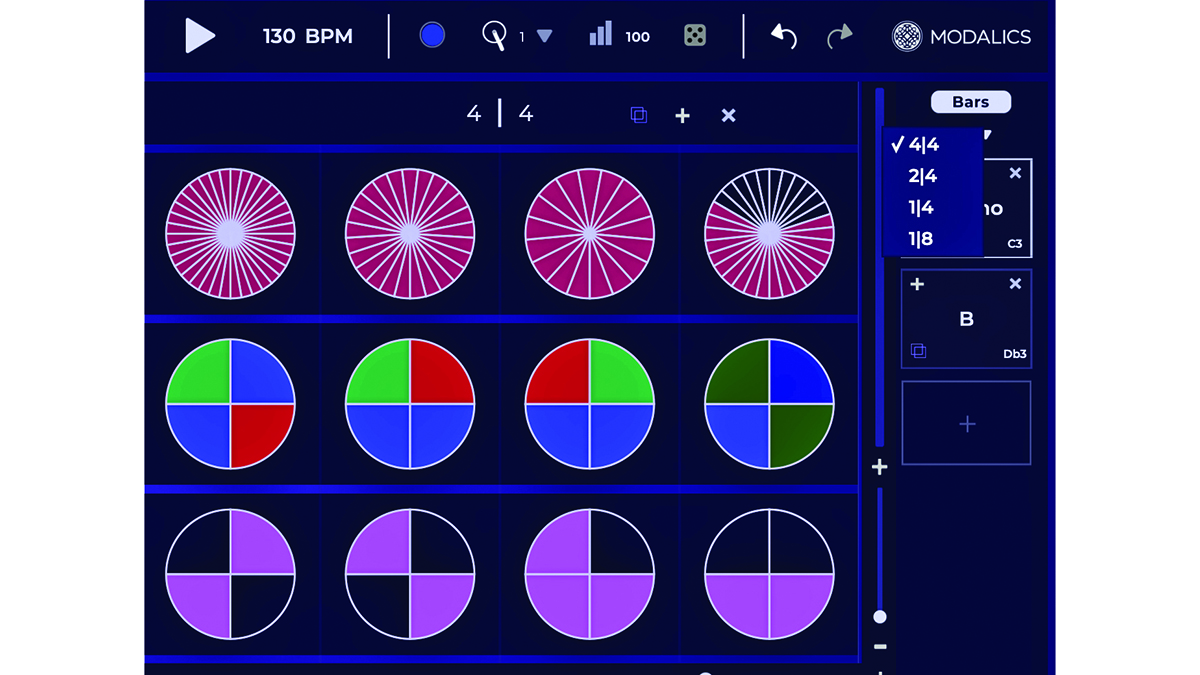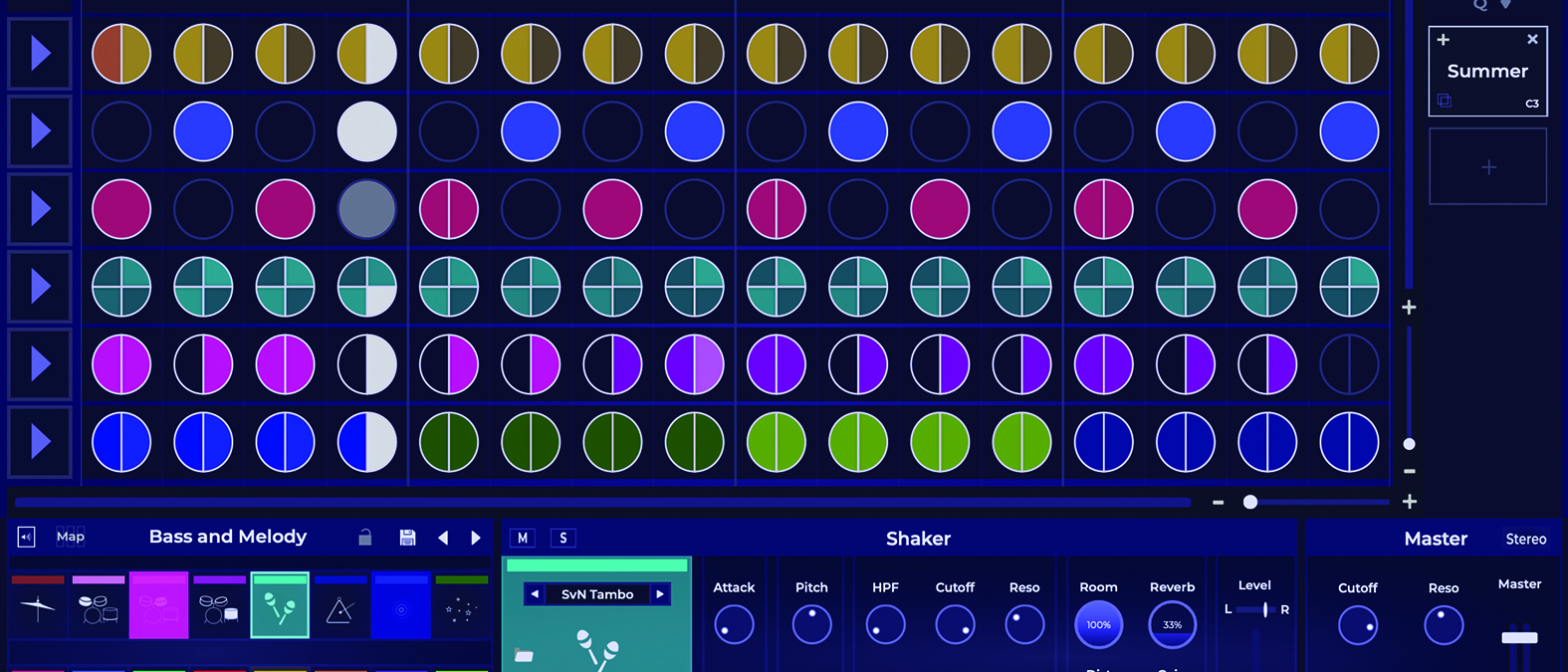MusicRadar Verdict
A triumphant debut from Modalics. We’ll be leaning on Beat Scholar to easily slice together our humanised beats for a very long time to come.
Pros
- +
Beat-slicing concept works well.
- +
Endless ways to divide and subdivide.
- +
Intuitive sampler, with drag and drop.
- +
Easy to get started.
Cons
- -
Deeper drum sound designers are out there.
MusicRadar's got your back
Modalics Beat Scholar: What is it?
For those not rhythmically inclined, beat programming can often be an arduous process. While some opt for a robotic, metronomic approach, those who crave the type of humanity and improvisation in their patterns that a real drummer can bring to the table very often find themselves spending far too long trying to coax their drum sounds to get a life. Results can be mixed.
- macOS 10.13+ (Apple Silicon Supported). Standalone, VST, VST3, AAX, AU (64-bit only). Intel Core i5 or equivalent AMD CPU, 4GB RAM (6GB recommended).
- Windows 10+ Standalone, VST, VST3, AAX (64-bit only). Intel Core i5 or equivalent AMD CPU, 4GB RAM (6GB recommended).
- Buy at Plugin Boutique
It’s for these people that new company Modalics has framed Beat Scholar, its debut plugin. Founded by well-versed industry specialist Eyal Amir and respected bass-playing heavyweight Or Lubianiker, Modalics’ first release is founded on a new spin on the beat-slicing concept.
Instead of slicing a sample sound into constituent, playable beats, Modalics slices up each beat within a set pattern, keeping the set rhythm intact, yet suffusing it with more and more variation and room for manoeuvre.
Its particular slicing concept is similar to say, a pizza where some slices are pepperoni and others vegetarian – technically, it remains one pizza in essence, but with an array of flavours.
You might think that we’re going off-piste with that analogy, but it’s this ‘pizza-minded’ idea that has actually been pivotal to building Beat Scholar, with its UI displaying a variety of circles (or pizzas, as Modalics does in fact typically refer to them) which can be sliced into up to 42 times, with each slice triggering a unique drum sound, a different timed rhythm or additional samples within the hit, as well as the core drum sample.
Modalics Beat Scholar: Performance and verdict
Playable as a standalone instrument, or as a plugin within your DAW, the first thing to compliment Modalics on is the sense of vivid fun that the UI immediately gives off. Its colour-coded drum pads, and the pattern area automatically fire up in a preset mode, demonstrating right off-the-bat how the sliced patterns sound when expertly arrayed.

• Sugar Bytes Looperator
16-step sample slicer with a more conventional approach to slicing and dicing recorded samples.
• IK Multimedia MODO Drums
If humanisation is what you’re looking for, then IK’s software drummer is immensely pliant.
The top toolbar presents the global functions and editing tools, while down at the bottom, the Kit Module gives access to the source sounds on which you can place the pattern module either entirely, or per slice. Colour coordination makes this process a lot simpler than a lot of more mathematical drum programming suites.
Want all the hottest music and gear news, reviews, deals, features and more, direct to your inbox? Sign up here.
To the right of this area sits the Sounds Module, where you can further shape the timbral quality of the currently selected sound, via sample and attack controls. You can also impart character-enhancing effects such as filtering, distortion reverb and compression. It’s surprisingly deep for something so straightforward to use.
In practice, the array of permutations you can instil into your beats is soon apparent. From adding subdivisions, quarter notes and oddball hits, creating odd little rounded-out micro-fills to the end of patterns to triggering effects, noises and samples – making beats sound less programmed and more organic has rarely been as joyously fun.

Are we human, or are we pizza?
While bending our beats into quirky and off-kilter patterns is now a doddle thanks to the slice-and-dice interface of Beat Scholar, further humanity can be injected into your beats via the in-built swing slider. Alternating between positive and negative swing values, you can get a more realistic sense of a teetering pair of hands helming the beat, even when neatly laid within your sequencer.
To make grooves that are more aligned with your music’s feel, 1/8, 1/4 or 1/2 swing reference values can be chosen and either applied subtly or if you’re feeling particularly adventurous, why not go the whole hog and ramp it up (or down!) to its maximum/minimum level.
Extreme negative swing values often have to be heard to be believed, but can lead you down some interesting rhythmic pathways, and totally switch flat-sounding patterns into more interesting variants, particularly those constructed from your own samples or found sounds.
A beatmaker and a scholar
Beat Scholar is more than just a nifty beat-focused sampler. It also brings a huge repository of its own samples, including old-school drum machines and real-world instruments organised into genre. Each of these can be dragged and dropped to any slice of any beat in order to build out some wholly original combinations.
Your own sounds can also be introduced into the sliced-and-diced world of Beat Scholar. It’s massively enticing to start throwing found sounds and DIY hits into the mix.
Beat Scholar will undoubtedly be a welcome addition to the collections of producers who need to fine-tune and tweak, with endless scope to minutely re-shape drum patterns over time, to get absolute precision or even its opposite – joyous freeform humanity and expressivity.
Hitting the ground running with their first product, we’re excited to see where Modalics’ giddy creativity will take them next…
MusicRadar verdict: A triumphant debut from Modalics. We’ll be leaning on Beat Scholar to easily slice together our humanised beats for a very long time to come.
Modalics Beat Scholar: Hands-on demos
Modalics
Richard Devine
Jordan Rudess
Modalics Beat Scholar: Specifications
- macOS 10.13+ (Apple Silicon Supported). Standalone, VST, VST3, AAX, AU (64-bit only). Intel Core i5 or equivalent AMD CPU, 4GB RAM (6GB recommended).
- Windows 10+ Standalone, VST, VST3, AAX (64-bit only). Intel Core i5 or equivalent AMD CPU, 4GB RAM (6GB recommended).
- CONTACT: Modalics

I'm Andy, the Music-Making Ed here at MusicRadar. My work explores both the inner-workings of how music is made, and frequently digs into the history and development of popular music.
Previously the editor of Computer Music, my career has included editing MusicTech magazine and website and writing about music-making and listening for titles such as NME, Classic Pop, Audio Media International, Guitar.com and Uncut.
When I'm not writing about music, I'm making it. I release tracks under the name ALP.
